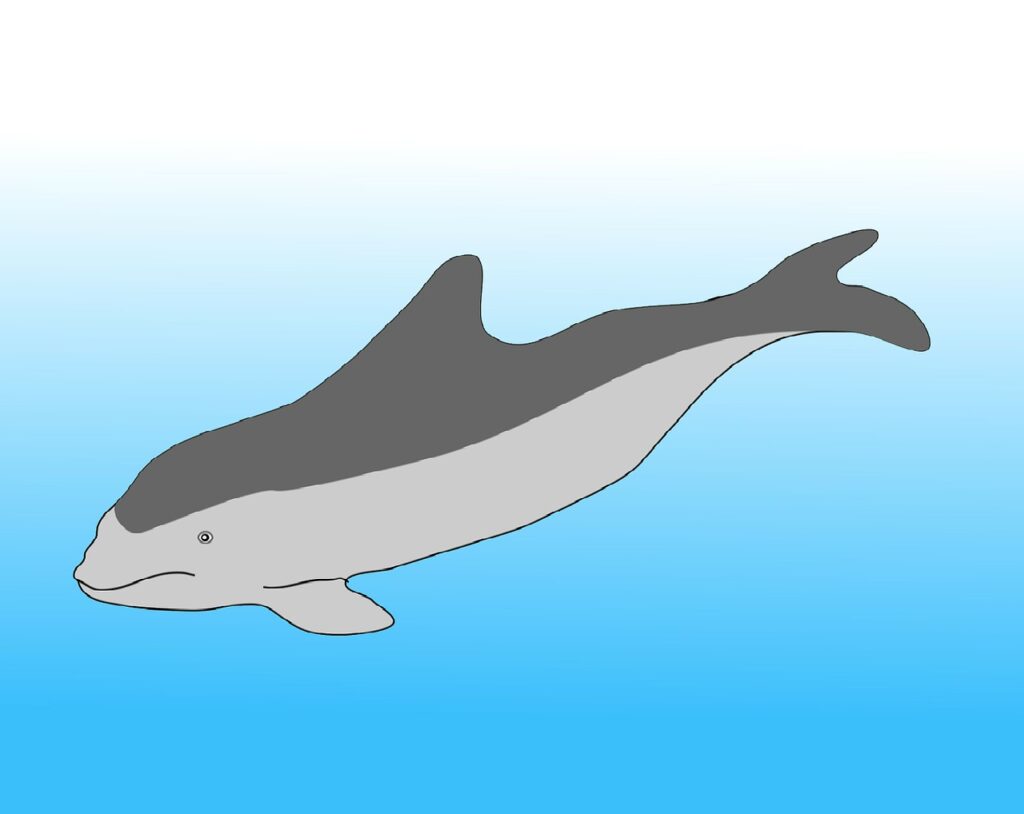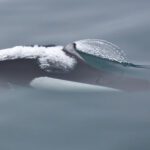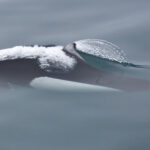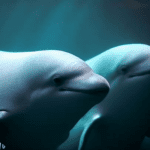The Finless Porpoise stands out with its smooth skin and lack of dorsal fin. It’s one of the most fascinating marine mammals and is known for its intelligence and sociable nature. They form tight-knit family groups and communicate through clicks and whistles.
These porpoises can swim fast and find food using echolocation. They can live in both marine and freshwater habitats, making them quite adaptable. But they also face many threats. Pollution, habitat destruction, and fishing gear entanglement are all risks to their existence.
It’s essential that governments and conservation organizations take action to protect this species. Establishing protected areas, enforcing strict regulations, and promoting sustainable tourism are all ways we can help.
We must act now before it’s too late and we lose the chance to admire these remarkable creatures. Together, we can make a difference in conserving our oceans’ treasures and preserving the delicate balance of marine life. Who needs a dorsal fin when you can still rock a killer smile?
Key Takeaways
- The finless porpoise is a unique marine mammal that is found in coastal waters and rivers in Asia.
- The species is facing numerous threats, including habitat loss, pollution, and accidental entanglement in fishing nets.
- Conservation efforts are crucial to protect the finless porpoise and ensure its survival in the wild.
- The porpoise’s diet mainly consists of fish and crustaceans, and its streamlined body allows it to swim swiftly and maneuver through the water.
- The species is known for its lack of a dorsal fin, which sets it apart from other porpoises and dolphins.
- The finless porpoise is highly social and often found in small groups or pods, which helps them in hunting and protection.
- Researchers and conservationists are working to raise awareness about the importance of protecting the finless porpoise and implementing measures to mitigate the threats it faces.
- Efforts are being made to establish protected areas and reduce pollution in the porpoise’s habitat to ensure its long-term survival.
- The finless porpoise is considered an indicator species, meaning its presence or absence can indicate the overall health of the marine ecosystem.
- By conserving the finless porpoise, we can also protect other marine species and maintain the balance of the marine environment.
Description of the Finless Porpoise

The Finless Porpoise is a unique marine mammal found in coastal waters. It has a sleek body and no dorsal fin, adapting to its aquatic environment. It can be up to 6 feet long, making it one of the smallest cetaceans. It’s known for its playful nature and agility.
These creatures have dark gray or black skin and a lighter underside. Without a dorsal fin, they can move through shallow waters without getting stuck or injured. Instead, they have ridges along their backs for stability while swimming.
This porpoise can emit high-pitched clicks and whistles, which lets them communicate and coordinate group activities. This also helps them form social bonds in their pod.
But, their situation is dire. Conservation efforts must be put into action to protect their habitat from pollution and development. Regulations on fishing can help reduce accidental bycatch. Additionally, marine protected areas can provide a safe haven for them and other vulnerable species.
Threats and Conservation Status
The conservation status of the Finless Porpoise is rapidly declining and is a matter of grave concern. These marine mammals face numerous threats to their survival. Overfishing and habitat loss are endangering them, while pollution is critically endangering them.
Conservation efforts are being made to protect them, however, much more must be done for them to survive in the wild. A study conducted by Dr. Wang Ding of Peking University’s School of Life Sciences revealed that their population has decreased by 13% annually since the 1980s due to factors such as habitat degradation and overfishing.
Despite this, the Finless Porpoise continues to make a splash, even without its signature fin.
Unique Adaptations and Survival Strategies
The finless porpoise, found in the Yangtze River of China, has amazing adaptations and survival strategies. Its body shape allows for fast swimming, and it has no dorsal fin. It uses echolocation to navigate and communicate underwater. It lives in small groups and hunts cooperatively. It also has a special skin texture that reduces drag. It can adjust its metabolic rate to conserve energy during times of low food availability.
It’s important to protect these creatures. We can do this by creating protected areas in their habitats, and by using sustainable fishing practices. This helps to ensure that the finless porpoise population continues to thrive. Furthermore, they have an impressive ability to avoid eye contact with people taking selfies. This proves once again that they are experts at the ‘out of sight, out of mind’ strategy.
Interactions with Humans

Humans have had varied associations with finless porpoise – both good and bad. Let’s look deeper at some of these with conservation, research, and cultural importance in mind.
- Conservation efforts: Numerous governments and organizations are committing to protect and conserve finless porpoises.
- Threats from fishing activities: Fishing nets entangling them result in accidental deaths, endangering their population.
- Research studies: Scientists are studying their behavior, habitat, and population dynamics to understand them better.
Moreover, human activities like pollution and habitat destruction have adversely affected their lives.
Pro Tip: To help in their conservation, reduce your single-use plastic usage and join local beach clean-up initiatives.
Scientists are exploring to uncover the mysteries of finless porpoise – as they are hiding more than just their fins.
Current Research and Future Directions

Researchers are hard at work to better comprehend the behavior, population trends, and habitat requirements of the finless porpoise. In the future, strategies to reduce threats will be put in place, as well as studies on their reproductive biology.
Investigations are also taking place to determine the effects of human activities on finless porpoises, such as noise pollution and destruction of their environment. Knowing the consequences is essential for establishing successful conservation efforts.
Helpful Hint: Working with local governments and communities can be a great help in protecting the finless porpoise.
Frequently Asked Questions
1. What is a finless porpoise?
A finless porpoise is a small marine mammal that belongs to the cetacean family. It is characterized by its lack of dorsal fin, giving it a unique appearance.
2. Where do finless porpoises live?
Finless porpoises are primarily found in the coastal waters of the Indo-Pacific region, including rivers, estuaries, and shallow seas. They prefer habitats with muddy or sandy bottoms.
3. What do finless porpoises eat?
Finless porpoises mainly feed on small fish, squid, and crustaceans. They use echolocation to locate their prey and navigate through their environment.
4. Are finless porpoises endangered?
Yes, finless porpoises are classified as endangered species. Their populations have been declining due to habitat loss, pollution, bycatch in fishing nets, and other human activities.
5. How long do finless porpoises live?
The average lifespan of a finless porpoise is about 20 to 25 years in the wild. However, some individuals have been known to live up to 30 years.
6. Are finless porpoises social animals?
Yes, finless porpoises are social animals that live in small groups called pods. They communicate using clicks, whistles, and body language to coordinate hunting and other activities.
Conclusion
The Finless Porpoise is a remarkable marine mammal that resides in the coastal waters of Asia. Its lack of dorsal fin sets it apart from its relatives. This species is highly adaptable; it can travel through detailed river systems and open seas. Its compact size and streamlined body allow it to move quickly, making them expert hunters.
In addition to their physical features, Finless Porpoises have amazing communication skills. They use clicks and whistles to find food, navigate, and talk to other members in their group. These vocalizations are necessary for social bonds and hunting techniques.
Sadly, Finless Porpoises face many threats due to human activities. Pollution, destroyed habitats, overfishing, and bycatch are all issues that put these creatures in danger. Conservation efforts must be taken to protect their habitats and reduce human impacts.
Interestingly, the Finless Porpoise holds great importance in many cultures. In ancient Chinese mythology, these porpoises were believed to be the reincarnations of drowned humans. These stories show the strong bonds between the porpoises and Asian societies.
References




